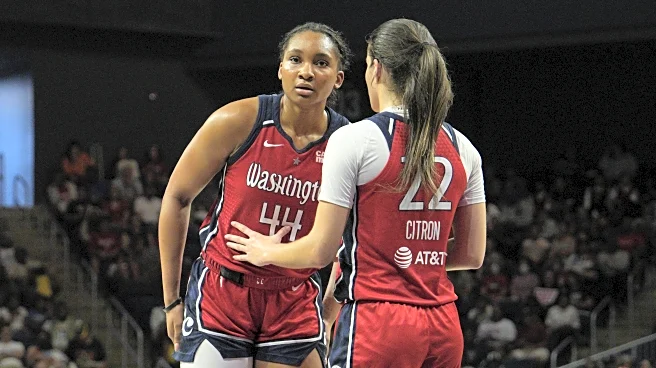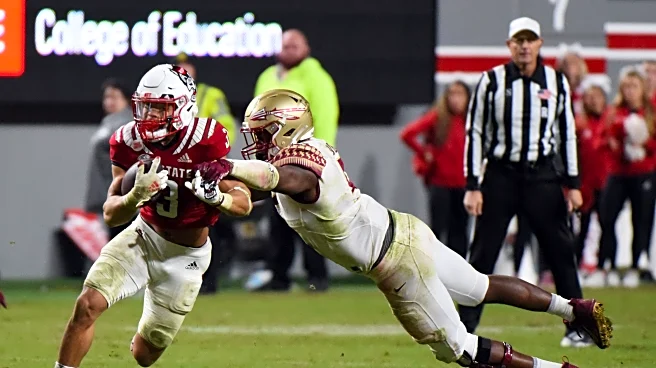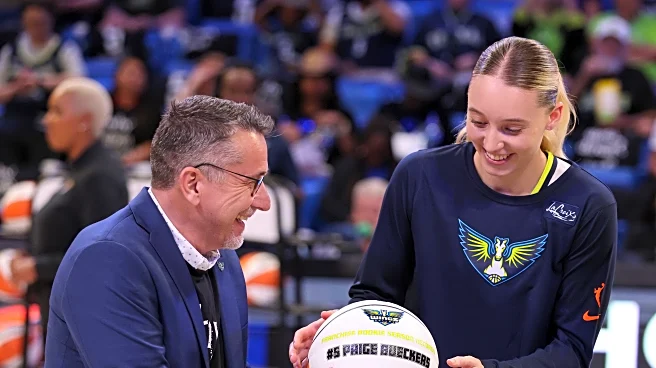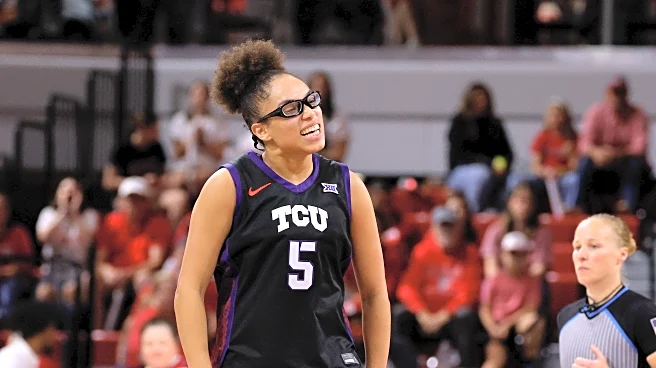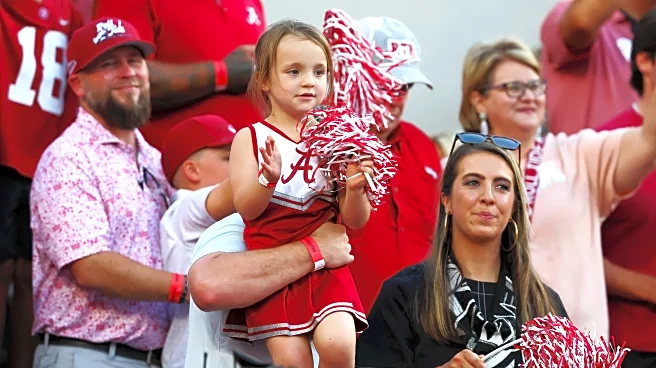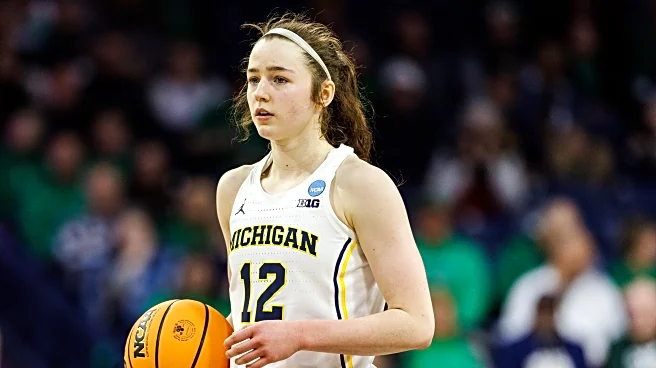When musing over how to maximize the No. 1 pick in any draft, including the WNBA Draft, it’s generally frowned upon to “draft for fit,” meaning picking the player with the skillset that will best elevate
your team. Teams are encouraged to take the best player available regardless of redundancies.
If their 9.7 percent chance hits and they win the 2026 WNBA Draft Lottery on Sunday, Nov. 23 (6:30 p.m. ET, ESPN), the Washington Mystics may walk a different path.
General manager Jamila Wideman is in a unique position—one that she has created through her own success. Washington will be drafting three times in the first round of the draft for a second-consecutive year. Last year, Wideman hit on rookie All-Stars Sonia Citron and Kiki Iriafen. Georgia Amoore, Washington’s third pick, missed her rookie season while rehabbing from an ACL injury.
An already-established young core gives Washington great flexibility when it comes to this upcoming draft. I’m not suggesting that Wideman will break the bank shorting the consensus, but she certainly has the ability to roll the dice on someone who may not be viewed as the 1A talent.
The best fit is a no-brainer

Head coach Sydney Johnson has made it clear what his team lacks: supportive shooting. Citron and Iriafen have enough juice to lead the team’s scoring attack, but they need better spacing to stop teams from double teaming and over helping. Most of Washington’s guards last year were ball-dominant pick-and-roll players, not floor spacers. That needs to change.
Enter Arlington, VA native Azzi Fudd. Fudd’s theoretical fit in Washington is something out of a storybook. The UConn product and 2025 NCAA Tournament Most Outstanding Player grew up just miles from CareFirst Arena, and has frequented Mystics games as a fan. Wideman has taken the time to watch games with Fudd’s parents. As the NCAA’s best volume 3-point shooter, her skillset is a picture-perfect match for what Johnson wants. I’ll reiterate what I said in a recent article about the top college talents: I find it extremely difficult to imagine that Fudd makes it past whatever pick the Mystics have, no matter how her super senior season unfolds.
She lacks some ancillary skills that you may want from a franchise-changing talent, but her scoring ability is enough to fit her comfortably into the draft’s top tier. She’s also experienced in the role that she would likely assume with the Mystics. Last season, she was Geno Auriemma’s third option behind lead combo-guard Paige Bueckers and post player Sarah Strong. In Washington, she would be the third option behind lead combo-guard Citron and post player Iriafen. Fudd’s range is the perfect floor-spacing antidote to maximize the rest of DC’s young core.
There is no better fit for Johnson’s system than Fudd. If the Mystics are picking first, and they are picking for fit, Fudd will be wearing a Mystics hat by the end of draft night. End of story.
The best available is much less clear

While Fudd doesn’t have much competition for best fit, the “best player available” argument isn’t so linear. One of the main reasons that I find it hard to believe Washington goes the best player route is that two of the top talents are true bigs: UCLA’s Lauren Betts and Valencia’s Awa Fam.
Betts and Fam have different strengths. Betts is the prototypical 5: She’s 6-foot-7, has solid fundamental footwork and impressive touch, and has dominated collegiate competition for years. Fam has been less dominant against her respective competition (professionals in Spain in Liga Femenina and across Europe in EuroLeague Women), but is a much better driver and rim runner than Betts. Both are solid connective passers and anchoring defenders. Fam is only 19 years old, and the eye test suggests she has a higher ceiling than the 22-year old Betts. Her mobility and frame is eerily reminiscent of A’ja Wilson, although her shot-making prowess is nowhere near that level. Betts is likely the “higher floor” pick, but her theoretical ceiling is less fit for the modern WNBA. Teams are no longer featuring jumbo centers as offensive focal points, especially through post ups.
Deciding between Betts and Fam is a discussion that many front offices will struggle with. For Washington, the more pressing question is that of the fit alongside Kiki Iriafen. For a team that has struggled with spacing, starting two non-shooting forwards just can’t be sustainable. Regardless of whether or not Wideman re-signs Shakira Austin, Johnson may look to move away from two-big lineups. Thus, picking Betts or Fam would create a logjam in the rotation. Given the redundancies between Iriafen and other non-shooting bigs, Wideman would have to view Betts or Fam as far better than other prospects to even consider drafting one of them.
As for other guards, TCU’s Olivia Miles and LSU’s Flau’Jae Johnson deserve real consideration. Both occupy a similar stratosphere as Fudd; they are not viewed quite as highly as Betts, but nonetheless lottery talents. Miles is the draft’s premier true point guard, a reputation living through her highlight passing. She started her college career as a whimpering 3-point shooter, but has since fixed her shot to an intriguing level. However, she thrives on the ball, and isn’t a stellar off-ball offensive threat. Drafting Miles would take on-ball reps away from Citron and Amoore, which may not be in Washington’s best interest.
Johnson is historically a better shooter than Miles, but short of the volume and efficiency of Fudd. Johnson does most of her work inside the arc, but possess a useful mix of ancillary skills that Fudd doesn’t have. Both Miles and Johnson are solid rebounders and passers. If I were to turn these somewhat anecdotal descriptions of the guards into a more tangible ranking it would be as follows. When it comes to overall ability, or “best player available,” Miles is probably the top guard, followed by Fudd and then Johnson. When it comes to fit, Fudd is first, followed by Miles and once again Johnson. Neither Miles nor Johnson would be a poor pick for Washington, but the organization’s preference for off-ball scoring may tip the scales in Fudd’s favor.
The only other name worthy of consideration at the moment is South Carolina guard Ta’Niya Latson, who led the country in scoring last year as a Florida State Seminole. However, Latson’s profile is too similar to Johnson’s for me to put her into the Fudd/Miles tier. She’s an on-ball scorer who can shoot, but does most of her work inside the 3-point line. Again, in the interest of maximizing Washington’s already-established core, off-ball scoring is priority number one.
